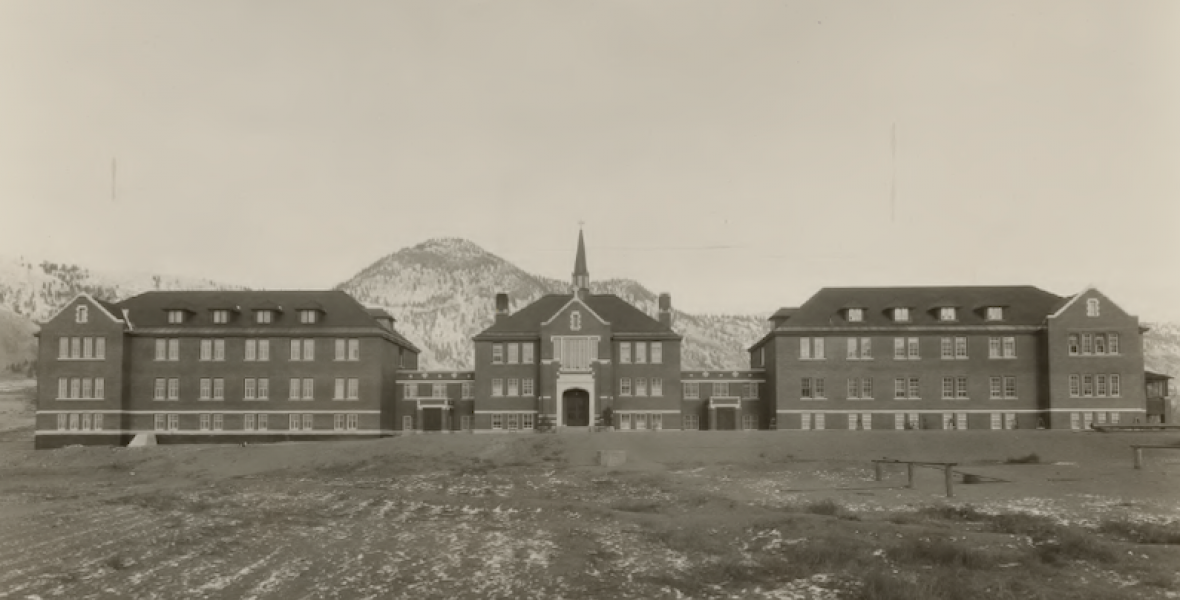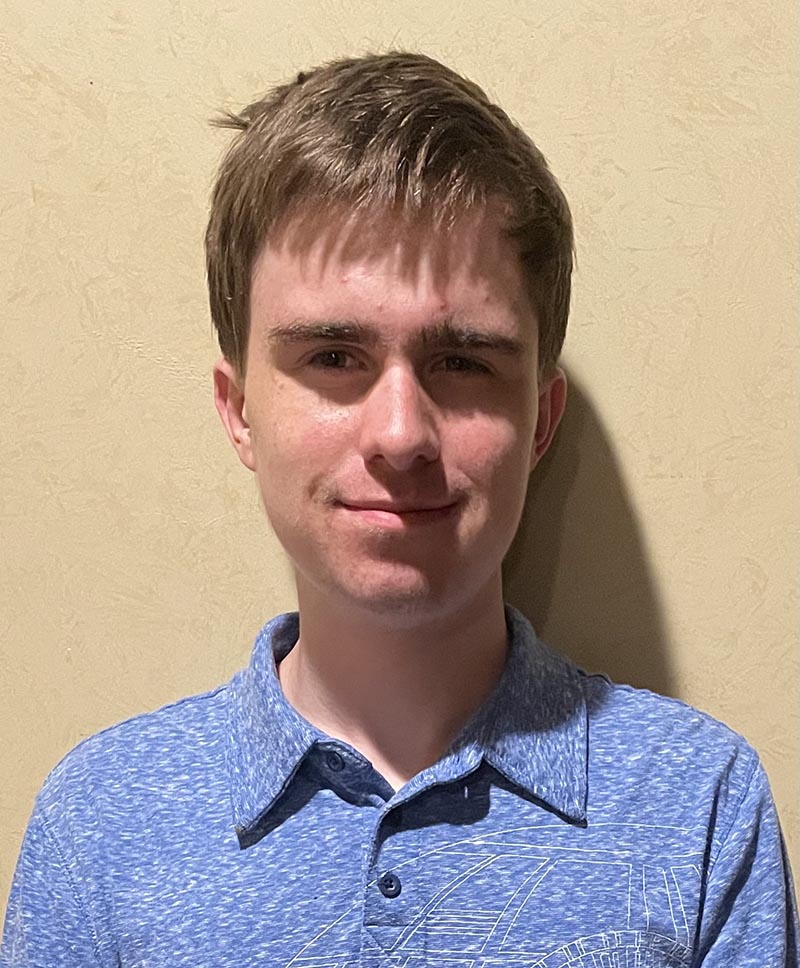
- Details
- By Andrew Kennard
When Connie Leonard found out that the bodies of missing children had been found at the site of the former Kamloops Indian Residential School in Kamloops, British Columbia, her body began to shake.
“Because it’s right here, in our community,” Leonard said. “And those are our relatives. We knew we had other relatives, ‘cause there were names in the family tree, and no one would talk about it. They’d say, ‘Oh, we were told they ran away from the residential school and must have froze to death,’ or something. There was all these stories that the church would tell people that were lies.”
Leonard, a Tk’emlúps te Secwépemc community member, mother and grandmother who served on the Tk’emlúps council from 2003 to 2012, told Native News Online that in her community, “no one knew the severity” of the impact of the residential-school system that was created to eliminate Indigenous culture. Many students of these schools endured physical, emotional, and sexual abuse.
Want more Native News? Get the free daily newsletter today.
“I’m in that age group where we’ve been through the mill, you know,” Leonard said. “We were the first responders on the reserve dealing with our parents’ grief and trauma, so residential-school survivors, we were the first ones integrated into the school system in town, and dealing with all that racism and bullshit.”
On May 27, the Tk’emlúps te Secwépemc Kúkpi7 Chief Roseanne Casimir confirmed that an preliminary ground-penetrating radar scan had detected 215 unmarked graves of children at the site of the Kamloops residential school, about 260 miles northeast of Vancouver. And in early July, Tk’emlúps te Secwépemc were endangered by severe heat and wildfires on their lands.
“Our people ended up being the centerpin during the uncovering of all those babies’ graves and everything,” Leonard said. “And dealing with all of that, we also were the host community for survivors, but then we were a host community for all the fire victims around, so our community was feeding everybody, and trying to do ceremonial fires.”
Tk’emlúps te Secwépemc became the focus of international media attention after the unmarked graves became widely known. Leonard said that attention “needs to stay strong,” but questions from non-Native people became exhausting and frustrating.
“This last year, everyone’s trying to educate the world on what’s happened, and then, we’re fricking tired, man,” she said. “Like, we’ve been in a war. We’ve had a war waged against us.”
Since the detection of the unmarked graves in Kamloops, Tk’emlúps te Secwépemc has held ceremonies and called for accountability for the missing children. Chief Casimir is one of the 13 delegates chosen to represent the Assembly of First Nations in a meeting with Pope Francis, which has been delayed due to the Omicron variant of COVID-19.
“I think foundations, and banks, and hospitals, everyone needs to do the work to make policies that are fair for everybody,” Leonard said. “And they have to be taught the real history.”
‘The imprinting from the residential school scarred him and all of us for life’
The residential-school system left its mark on Leonard’s family, as her father and sister were students.
She said students weren’t allowed to speak their native language, and her sister’s hair, which is “very sacred to us,” was cut. Her sister told her that she knew there were babies buried in front of the school she attended, and that students were raped.
“My cousin who lives nearby, he would have to tighten his belt up every night, as a little tiny boy, to go to bed, because he didn’t know how else to protect himself from the pedophile rapists in the Catholic Church,” Leonard said. “And they had nobody to tell.”
She said her father’s experiences at the residential school gave him post-traumatic stress disorder and influenced how he thought children should behave. She said he “beat my foster brother so bad when I was a child, and it’s just traumatizing for life.”
“My dad was a good man, and he had a good heart, and I know he loved me and I loved him,” Leonard said. “But the imprinting from the residential school scarred him and all of us for life. Like, sometimes he would rage in the house and wreck things. I remember having to sleep with my brother with all the guns and knives under the bed because he was freaking out. And it didn’t happen a lot, but it happened enough to scar you.”
She said that after the government took over the residential school, her mother, older sister, and adopted sister were hired to cook for the students. She “kind of became a matriarch in the house” for the kids and children they had adopted. Her family gardened, hunted, fished, and bartered to keep food coming in the door.
“My parents always made sure that we were fed, but there wasn’t anything left for like emotional support, or any child rearing,” Leonard said.
She responded to her trauma through work, from cleaning around the house to keep the peace to working as a First Nations support worker at NorKam Secondary School, and spending years as chief and councillor for Tk’emlúps te Secwépemc.
“You were just constantly trying to lead and to work with less resources, more problems, while extreme trauma was happening repeatedly with suicides and deaths,” Leonard said about the difficult aspects of her job as a councillor.
She said she struggled with depression after her doctor told her she had to stop working because of her health. She’s done counseling, yoga, somatic healing, and cannabis therapy, and she’s advocated for an elder care facility as well as a detox center for the community within Tk’emlúps te Secwépemc and volunteered at the health center on the reserve.
“I’ve had to work really hard spiritually to crawl my way back from being a bad statistic,” Leonard said. “Because some of our people didn’t make it.”
‘They chose us’
Following the detection of the unmarked graves in Kamloops, Tk’emlúps te Secwépemc held a pipe ceremony and assisted with the “Walking the Spirits Home” ceremony in Kamloops in solidarity with survivors and the missing children. They began collecting financial contributions for further investigation and memorials for the children. Tk’emlúps te Secwépemc's Language and Culture Department planned the Sacred 13 Grassroots Family Ceremony, held in August, for families to gather at their sacred burial site.
“So going to our powwow arbour, and singing and drumming and creating that energy to give honor to all of those babies—they chose us,” Leonard said. “They chose our people to come out, to come back, and to have their story told, and our people took that really serious.”
On September 30, the first National Day for Truth and Reconciliation in Canada to honor residential school survivors, Tk’emlúps te Secwépemc called on the world to drum with them at 2:15 p.m. They also premiered a video titled “me7 w7ec-kt wel me7 yews” (“We Will Always Be Here”).
“One of the things in the band meetings that I’ve mentioned was that those kids picked us to tell their stories,” Leonard said, “and our community is trying to really take that responsibility very seriously about doing things in a good way, and being a model for other communities that are going through the findings in their own communities.”
Tell Us What You Think
More Stories Like This
50 Years of Self-Determination: How a Landmark Act Empowered Tribal Sovereignty and Transformed Federal-Tribal RelationsNavajo Nation Council Members Attend 2025 Diné Action Plan Winter Gathering
Ute Tribe Files Federal Lawsuit Challenging Colorado Parks legislation
NCAI Resolution Condemns “Alligator Alcatraz”
NABS Documents 134 More Survivor Stories, Expands Digital Archive in 2025
Help us defend tribal sovereignty.
At Native News Online, our mission is rooted in telling the stories that strengthen sovereignty and uplift Indigenous voices — not just at year’s end, but every single day.
Because of your generosity last year, we were able to keep our reporters on the ground in tribal communities, at national gatherings and in the halls of Congress — covering the issues that matter most to Indian Country: sovereignty, culture, education, health and economic opportunity.
That support sustained us through a tough year in 2025. Now, as we look to the year ahead, we need your help right now to ensure warrior journalism remains strong — reporting that defends tribal sovereignty, amplifies Native truth, and holds power accountable.
 The stakes couldn't be higher. Your support keeps Native voices heard, Native stories told and Native sovereignty defended.
The stakes couldn't be higher. Your support keeps Native voices heard, Native stories told and Native sovereignty defended.
Stand with Warrior Journalism today.
Levi Rickert (Potawatomi), Editor & Publisher

